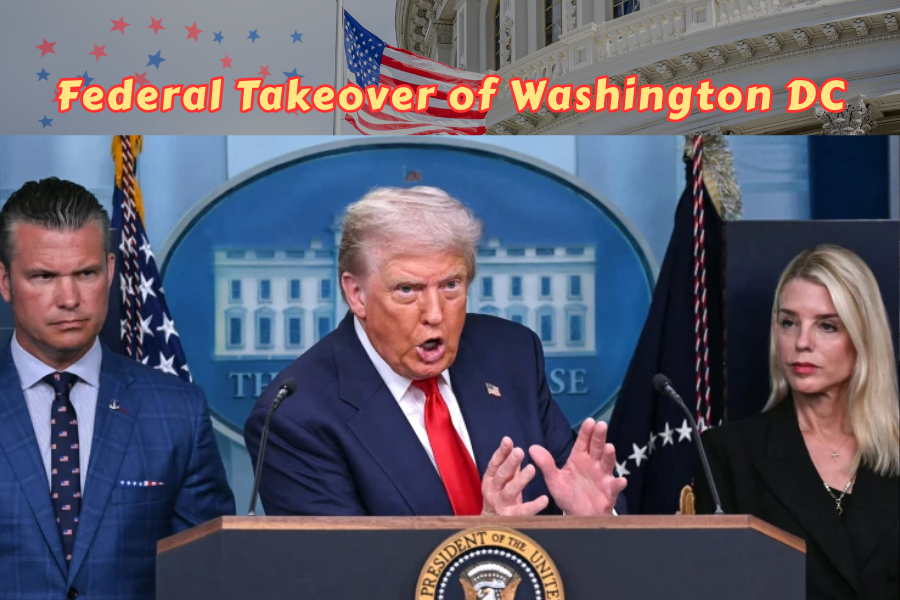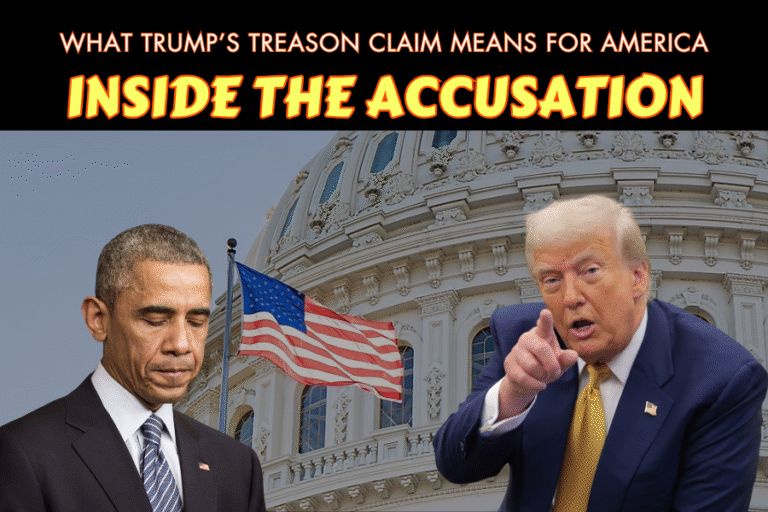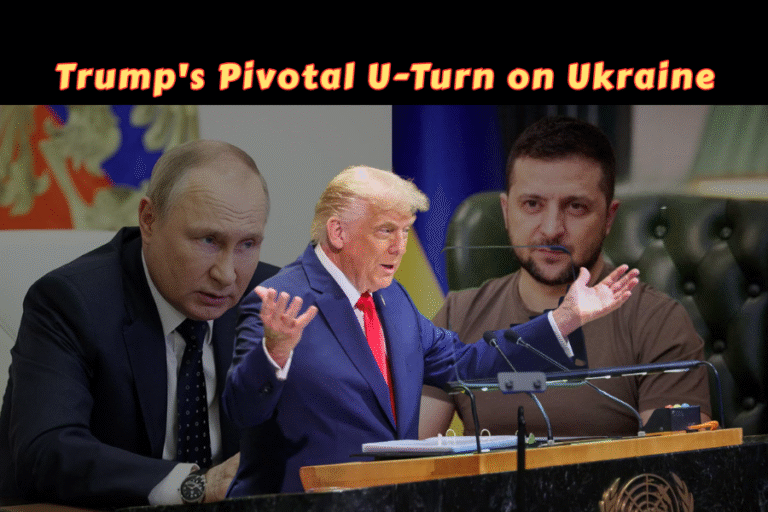(Quratulain Khalid)
Introduction: A Dramatic Shift in DC Governance
On August 11, 2025, President Donald Trump declared a public safety emergency in Washington DC, sparking intense debate. For instance, he invoked the Home Rule Act to place the Metropolitan Police Department under federal control. Additionally, he deployed 800 National Guard troops to the capital. Consequently, this unprecedented federal takeover of Washington DC by Trump aims to curb crime. However, critics argue it represents presidential overreach. The move affects DC’s 700,000 residents, raising questions about autonomy, taxes, jobs, and quality of life. Moreover, it tests the balance between federal authority and local self-rule. Therefore, this article examines the takeover’s background, current status, implications, and future prospects. By analyzing historical precedents and current reactions, we highlight its impact. For example, Trump cited rising crime rates, despite data showing declines. Nevertheless, he promised to make DC the safest place on earth. The takeover, initially for 30 days, faces legal challenges. Thus, understanding its effects is crucial for residents and policymakers. This analysis provides a comprehensive guide to this pivotal moment.
The federal takeover of Washington DC by Trump exploits the city’s unique status. As a federal district, DC lacks full autonomy. The Constitution grants Congress exclusive jurisdiction. Although the Home Rule Act of 1973 allowed limited self-governance, Congress retains override powers. Therefore, Trump’s action leverages this framework to address perceived local failures. Furthermore, it has divided opinions. Mayor Muriel Bowser called it unsettling, while supporters praise bold leadership. Consequently, the takeover reshapes DC’s governance, affecting daily life and national politics. The emotional stakes are high for residents, who fear militarization but hope for safety. This article delves into these dynamics, offering clarity on a transformative event.
Historical Background: DC’s Struggle for Self-Rule
Washington DC’s governance has evolved since its establishment in 1790. Initially, Congress directly managed the district, denying residents local government. For example, the Constitution’s Article I, Section 8, grants Congress exclusive authority. In 1802, DC gained a presidentially appointed mayor. However, residents lacked voting rights. Consequently, the Organic Act of 1871 created a territorial government with a governor and council. Corruption scandals led to its repeal in 1874. Subsequently, a three-member commission ruled until 1973. The civil rights movement spurred change. For instance, the 23rd Amendment in 1961 granted DC electoral votes. Additionally, the Home Rule Act of 1973 allowed an elected mayor and council. Nevertheless, Congress retained veto power over legislation and budget approval. Residents gained a non-voting congressional delegate in 1971. Statehood efforts, like HR 51 in 2021, passed the House but stalled in the Senate. Republicans argue statehood favors Democrats, given DC’s 90% Democratic vote in 2024.
The federal takeover of Washington DC by Trump echoes historical interventions. For example, Congress overrode DC’s marijuana legalization in 2014. Similarly, the 1995 Financial Control Board managed DC’s budget during a fiscal crisis. These precedents highlight DC’s vulnerability. Moreover, demographic shifts influence governance. DC’s population, 46% Black, faces high poverty in some wards. Crime peaked in the 1990s, with 479 murders in 1991. Reforms reduced crime by 70% by 2010. However, recent spikes, linked to post-COVID effects, prompted Trump’s action. Despite this, violent crime dropped 32% from 2023 to 2025. Therefore, the takeover seems politically motivated, targeting DC’s Democratic leadership. Bowser’s opposition underscores federal-local tensions. Thus, the federal takeover of Washington DC by Trump builds on a long history of congressional dominance, reigniting debates on autonomy.

Current Status: The Mechanics of Trump’s Takeover
On August 11, 2025, Trump issued an executive order declaring a public safety emergency in DC. Consequently, the order placed the MPD under federal control. Additionally, it deployed 800 National Guard troops for support. For instance, Trump appointed a federal coordinator, a former FBI official, to oversee policing. The takeover, initially for 30 days, requires congressional approval for extension. Furthermore, it cites a crime crisis, despite data showing a 12% drop in violent crime in 2025. The Home Rule Act allows such emergencies, but legal experts question its basis. For example, the ACLU filed a lawsuit on August 12, arguing it violates Home Rule. Mayor Bowser called it unlawful but urged calm. Meanwhile, the MPD, with 3,800 officers, now reports to federal authorities. Local officials retain limited roles.
The implementation is swift. National Guard troops patrol high-crime areas. Federal agents assist MPD operations. Additionally, the order includes plans to relocate homeless individuals and rename streets. Trump aims to beautify DC, targeting federal land use. For instance, DC’s 25% federal property could see redevelopment. However, residents fear militarization. Community leaders worry about racial profiling, especially among Black residents. The takeover affects DC’s $15 billion budget, with 25% from federal funds. Consequently, resource shifts are possible. The order sets crime reduction targets, promising a 50% drop in six months. Critics doubt this, citing falling crime stats. Democrats oppose extension, while Republicans support it. Thus, the federal takeover of Washington DC by Trump is active but faces legal and political hurdles, shaping the city’s immediate future.
Reasons for the Takeover: Crime, Politics, and Power
Trump’s takeover stems from perceived crime surges and political motives. For example, he cited a crime crisis in his August 11 speech. However, violent crime dropped 32% since 2023, and homicides fell 22% in 2025. Consequently, critics argue the emergency is pretextual. Trump has long targeted DC’s Democratic leadership, criticizing Bowser’s progressive policies, like police defunding in 2020. Moreover, the 2025 election, where Trump unusually won DC’s electoral votes, added pressure. The takeover aligns with Project 2025, a Heritage Foundation plan for federal control over DC. For instance, it aims to reform the capital, seen as a Democratic stronghold. Trump’s law-and-order agenda drives the move, promising safety for 200,000 federal workers.
The Home Rule Act’s ambiguities enable this action. Congress can override DC laws, and emergency provisions are vague. Therefore, Trump’s order exploits this framework. Legal experts, like Monica Hopkins from ACLU-DC, argue it oversteps. Additionally, DC’s lack of statehood leaves it vulnerable. Residents pay $4 billion in federal taxes without congressional representation. The takeover exacerbates this injustice. Furthermore, Trump’s reelection timing suggests power consolidation. He mentioned similar actions for Chicago and Los Angeles. Critics fear authoritarianism, comparing it to historical interventions like the 1991 Rodney King riots. Thus, the federal takeover of Washington DC by Trump blends crime concerns with political strategy, testing federal-local boundaries.

Implications for DC Residents: Taxes, Jobs, and Quality of Life
The federal takeover of Washington DC by Trump significantly impacts residents’ lives. Taxes remain stable initially, with DC contributing $4 billion annually to federal coffers. However, federal control could redirect local funds to policing. For instance, DC’s progressive taxes support social programs, but federal priorities may cut these. Consequently, residents fear reduced services, affecting quality of life. Jobs face mixed effects. The city’s 200,000 federal workers benefit from promised safety, potentially boosting morale. Nevertheless, militarization deters talent, and tourism, a key sector, risks decline. MPD officers face federal oversight, causing resentment. Unemployment, at 4.5% in 2025, could rise if businesses leave due to instability.
Quality of life is a major concern. Increased patrols raise anxiety, especially among Black residents, who fear profiling. For example, Congressman Jonathan Jackson likened it to historical military occupations of Black communities. Housing costs, with a median rent of $2,500, may rise with redevelopment. Gentrification accelerates, displacing lower-income residents. Community programs, like education and health, face cuts as federal priorities dominate. Moreover, the takeover diminishes local control, making elections symbolic. Bowser’s authority weakens, frustrating residents. The ACLU warns of surveillance risks. Thus, the federal takeover of Washington DC by Trump promises security but threatens freedoms, reshaping daily life for residents.
The social fabric is strained. DC’s 46% Black population fears rights erosion, recalling 1968’s occupation after MLK’s assassination. Civil liberties groups highlight surveillance concerns. For instance, the ACLU’s lawsuit argues the takeover violates democratic principles. Residents lose agency over local governance. Consequently, quality of life may decline despite safety promises. The federal takeover of Washington DC by Trump balances potential economic gains against social and political costs, creating uncertainty for residents’ future.
Legal and Constitutional Challenges
The takeover faces significant legal scrutiny. The Home Rule Act grants DC limited self-rule but allows congressional override. Emergency provisions require justification, yet crime declines undermine Trump’s rationale. For example, the ACLU’s August 12 lawsuit claims unlawful overreach, citing no imminent threat. Legal scholars, like Noah Feldman, argue it tests constitutional limits. The Supreme Court could hear the case by 2026. Past rulings, such as Boerne v. Flores in 1997, limited federal power over localities. Moreover, extension beyond 30 days needs congressional approval, which Democrats may block. Republicans, holding majorities, support Trump.
Constitutional issues center on DC’s lack of statehood. Residents pay taxes without congressional representation, a grievance marked by DC’s “taxation without representation” license plates. The takeover amplifies this, violating democratic norms. For instance, the 23rd Amendment grants electoral votes, but no senators exist. Statehood advocates, pushing HR 51, see the takeover as evidence of inequity. The order indirectly invokes the Insurrection Act, raising authoritarian fears. Consequently, the federal takeover of Washington DC by Trump is legally contentious, potentially setting precedents for federal-local relations. Courts and Congress will shape its outcome.
Broader Political and Geopolitical Implications
Politically, the takeover consolidates Trump’s power in a Democratic stronghold. DC’s 92% anti-Trump vote in 2024 makes it a target. For example, silencing local opposition aligns with Project 2025’s reform agenda. The move could inspire takeovers in other cities, like Chicago. Critics warn of authoritarian creep, comparing it to Hungary’s centralization under Orbán. Geopolitically, it signals U.S. instability. Allies like the UK express concern, while Russia’s Medvedev mocked it as imperial overreach. China sees opportunity in U.S. distraction. Consequently, the federal takeover of Washington DC by Trump weakens America’s global image, portraying a divided nation.
Federal operations are affected. DC hosts key agencies, and enhanced security could improve efficiency. However, local tensions hinder collaboration. Federal workers, 25% of DC’s workforce, benefit from safety but face morale issues. Moreover, the takeover fuels statehood debates. Polls show 60% of DC residents support statehood, with national support at 45%. The action could embolden populists abroad, impacting alliances like NATO. Thus, the federal takeover of Washington DC by Trump has far-reaching implications, reshaping domestic politics and international perceptions.
Future Prospects: DC’s Path Forward
The takeover’s future hinges on legal and political outcomes. If Congress approves extension in September 2025, it could last Trump’s term. Republicans support, but Democrats plan filibusters. The Supreme Court may rule by 2026. If upheld, DC becomes more federalized, weakening local elections. Taxes shift to federal priorities, boosting security jobs. Quality of life improves with lower crime but erodes with militarization. Gentrification may displace residents. Alternatively, if overturned, Bowser regains control, and Trump may appeal. Statehood gains traction, with HR 51 potentially passing by 2027. Polls show rising support.
Long-term, DC may achieve statehood, granting representation. Taxes remain federal, but jobs in tourism rebound. Quality of life rises with investment, though inequality persists. The federal takeover of Washington DC by Trump could inspire reforms or further interventions. It redefines DC’s identity, balancing safety and autonomy. The outcome depends on courts, Congress, and public pressure, shaping the capital’s destiny.
Conclusion
The federal takeover of Washington DC by Trump in 2025 is a defining moment. Its roots lie in DC’s federal status and historical interventions. Currently, it places MPD under federal control, deploying National Guard troops. Reasons include crime concerns and political motives. Implications affect taxes, jobs, and quality of life, with risks of militarization. Legal challenges question its validity, while political and geopolitical ripples reshape perceptions. Future prospects range from extended control to statehood. Third world nations can draw lessons on governance. The federal takeover of Washington DC by Trump tests America’s federalism, with lasting impacts on the capital’s future.







